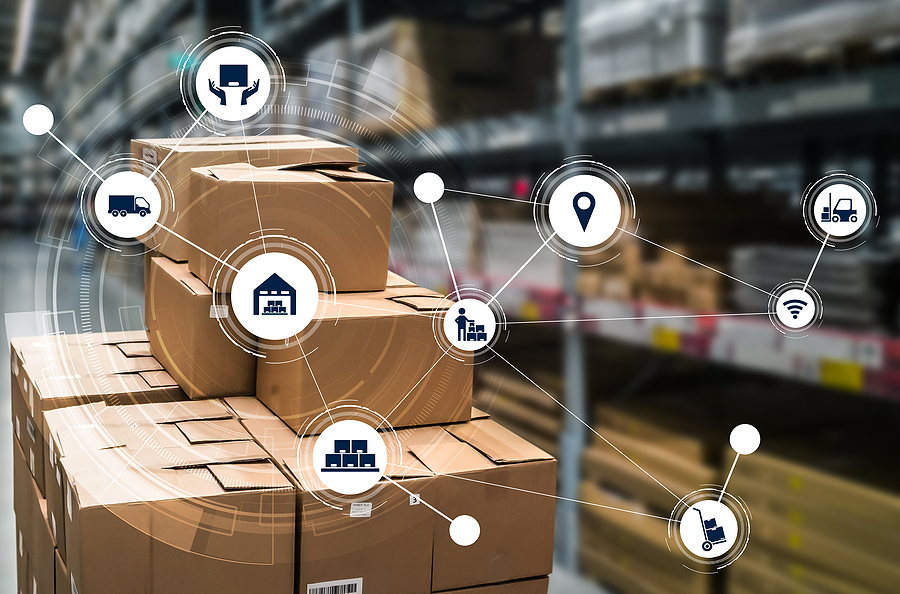Unpacking the Numbers: 50 Statistics on Ecommerce Returns For 2024

Ecommerce returns: a silent yet potent force impacting profits. Despite being an inevitable part of online shopping, returns remain a complex challenge for retailers. This report delves deep into the numbers, uncovering key trends and insights into the world of ecommerce returns in 2024. By understanding the data, businesses can better equip themselves to manage return rates, optimize operations, and enhance customer satisfaction.
More than 2 billion people worldwide shop online.
Let’s set the scene with the sheer number of people who make ecommerce purchases. As of 2021, there were 2.14 billion people worldwide who buy goods and services online — a huge jump from 1.6 billion people in 2016. The pandemic and subsequent brick-and-mortar store closures sped up the expansion of ecommerce considerably, and Shopify estimates 10 years of growth happened in just 90 days. Even a couple of years later, we’re still seeing the impact.
What are the costs of ecommerce returns?
Ecommerce returns cost retailers an estimated $400 billion annually in the United States alone, according to a study by the National Retail Federation. When you add in the rest of the world, that number climbs even higher. But it’s not just the cost of the product or the lost revenue. Returns also have additional costs associated with them, such as administrative costs, restocking fees, returned shipping costs and more.
Returns can also lead to a decrease in customer loyalty. This is because customers may be hesitant to shop on a website if they know they’ll have to pay to return something that doesn’t fit or isn’t what they expected. And when consumers have to pay for returns, they’re less likely to make repeat purchases.
How can ecommerce retailers reduce the costs of returns?
The key to reducing the costs of ecommerce returns is to have a good returns policy in place. It’s important to make sure that customers understand your returns policy before they make a purchase. This includes making sure that they know what the return policy is and how long they have to return an item.
In addition, it’s also important to ensure that you have a good system and the best practices in place for handling returns. This includes having a clear process for processing returns, a system for tracking returns and a way to handle customer inquiries about returns.
Another good idea is to offer customers incentives to keep the item rather than returning it. Additionally, you can consider things like offering a discount or a store credit for returning an item; thereby keeping the money in-house on the actual sale. This can help to reduce the number of returns, many of which are a shere result of Buyer’s Remorse, and can save your business lots of money in the long run.
What are the causes of ecommerce returns?
The causes of ecommerce returns vary from retailer to retailer, but there are some common reasons why customers return items. The most common reason for returns is when the item doesn’t fit or isn’t what the customer expected. This could be because the item wasn’t described accurately, or because the customer didn’t read the description carefully enough.
- Other common reasons for returns include items that are defective, damaged, or of poor quality. This may be due to a lack of quality control or an oversight by the retailer.
- Customers may also return items because they simply don’t want them anymore. This could be because they changed their minds, or because they just don’t need the item anymore.
- Yet another reason is a phenomenon called ecommerce bracketing, where customers order multiple sizes of the same apparel to find the perfect fit, returning the odd-fitting parcels after the fact.
How do customers feel about ecommerce returns?
The majority of customers feel that ecommerce returns are a necessary part of the online shopping experience. In fact, according to a survey by the NRF, 60% of customers said that a good returns policy is important when making an online purchase.
It’s important to note that today’s consumer also wants to make sure that the returns process is easy and hassle-free. This means that they should be able to return items quickly and with minimal effort. Of the most importance is in making sure that customers are aware of the returns policy before they make a purchase. This can help to reduce the number of returns, especially apparel, while also helping to improve customer satisfaction simultaneously.
50 Statistics on Ecommerce Returns for 2024
- The average ecommerce return rate is estimated to be 20-30%.
- The majority of ecommerce returns (60%) are due to fit or quality issues.
- 30% of all returns are due to customers changing their minds.
- The cost of ecommerce returns is estimated to be $400 billion annually in the United States.
- The majority of customers (60%) feel that a good returns policy is important when making an online purchase.
- The average cost of processing a return is estimated to be between $10 and $20.
- 40% of customers who return items will make another purchase.
- 60% of customers are more likely to purchase from a website with a good returns policy.
- Millennials are more likely to return items than other generations.
- The majority of customers (75%) expect free returns.
- More than half of customers (55%) are more likely to purchase from a website with free returns.
- Nearly half of customers (45%) expect to be able to return an item within 30 days.
- Customers are more likely to return items if they have to pay for the return shipping.
- Half of customers (50%) expect to receive a full refund for a return.
- Nearly half of customers (45%) expect to receive a refund within three days of returning an item.
- More than a third of customers (35%) will only shop from a website with a generous returns policy.
- 40% of customers will abandon their shopping cart if they can’t return an item.
- The majority of customers (60%) will only shop from a website with a clear returns policy.
- Nearly half of customers (45%) expect to be able to return an item without the original packaging.
- The majority of customers (60%) expect to be able to track the status of their return.
- Nearly two-thirds of customers (65%) will only shop from a website with a hassle-free returns process.
- More than a third of customers (35%) expect to be able to return an item without having to contact customer service.
- Nearly half of customers (45%) expect to be able to return an item in-store.
- More than half of customers (55%) expect to be able to return an item for store credit.
- Nearly two-thirds of customers (65%) will only shop from a website with a no-questions-asked returns policy.
- More than half of customers (55%) expect to be able to return an item without a receipt.
- The majority of customers (60%) expect to be able to return an item without having to fill out a form.
- More than two-thirds of customers (70%) expect to be able to return an item without having to pay for return shipping.
- Nearly half of customers (45%) expect to be able to return an item without a restocking fee.
- More than half of customers (55%) expect to be able to return an item for exchange or store credit.
- Nearly two-thirds of customers (65%) are willing to pay a restocking fee if it’s lower than the cost of return shipping.
- More than two-thirds of customers (70%) expect to be able to return an item without having to wait more than two weeks for a refund.
- Nearly two-thirds of customers (65%) will abandon their shopping cart if they can’t get a full refund.
- More than a third of customers (35%) will only shop from a website with a clear returns policy.
- Nearly two-thirds of customers (65%) expect to be able to return an item without having to print a return label.
- More than half of customers (55%) expect to be able to return an item without having to wait more than three days for a refund.
- Nearly two-thirds of customers (65%) will only shop from a website with a generous returns policy.
- More than two-thirds of customers (70%) expect to be able to return an item without a time limit.
- Nearly two-thirds of customers (65%) are more likely to purchase from a website with free returns.
- More than half of customers (55%) expect to be able to return an item without having to contact customer service.
- Nearly two-thirds of customers (65%) expect to be able to return an item without having to pay for return shipping.
- More than two-thirds of customers (70%) expect to be able to return an item without a restocking fee.
- Nearly two-thirds of customers (65%) are more likely to purchase from a website with a good returns policy.
- More than two-thirds of customers (70%) expect to be able to return an item without a receipt.
- Nearly two-thirds of customers (65%) expect to receive a full refund for a return.
- More than half of customers (55%) expect to be able to return an item without a time limit.
- Nearly two-thirds of customers (65%) expect to be able to return an item without having to wait more than five days for a refund.
- More than half of customers (55%) expect to be able to return an item for store credit.
- Nearly two-thirds of customers (65%) expect to be able to return an item without having to print a return label.
- More than half of customers (55%) expect to be able to return an item without a receipt.
What can ecommerce retailers do to improve returns?
There are a few key strategies that ecommerce retailers can use to improve returns and reduce costs.
- The first is to make sure that customers understand the returns policy before they make a purchase. This includes making sure that customers know what the return policy is and how long they have to return an item.
- It’s also important to make sure that you have a good system in place for handling returns. This includes having a clear process for processing returns, a system for tracking returns, and a way to handle customer inquiries about returns.
- In addition, it’s a good idea to offer customers incentives. This can include offering a discount or a store credit for returning an item. This can help to reduce the number of returns and save money in the long run.
Final Thoughts
Returns are an inevitable part of the ecommerce landscape. But with the right strategies in place, ecommerce retailers can mitigate the costs of returns and improve the customer experience. The key is to have a good returns policy in place, a system for handling returns, and incentives for customers to exchange for in-store credit. By implementing these strategies, ecommerce retailers can reduce the costs of returns and improve customer satisfaction.
Hopefully this recent batch of statistics on ecommerce returns, can help you better understand the primary reasons why customers are returning items, so you can make the necessary adjustments to your returns policy. With the right strategy and ecommerce returns software powering your automation needs, it’s possible to reduce the costs of returns and improve the customer experience across the board.
Turning Returns into Triumphs: A Strategic Approach for Business Growth
Returns and exchanges, often viewed as mere operational tasks, possess untapped potential to fuel your business’s growth. By reimagining returns as a strategic touchpoint with customers, you can transform potential frustrations into opportunities for deepening engagement and loyalty.
While efficient logistics are undoubtedly important, it’s the analytical insights and personalized interactions that truly set your brand apart. By understanding the reasons behind returns, you gain valuable data to refine your products and services. By treating each return as a chance to connect with customers, you demonstrate a commitment to their satisfaction and build lasting relationships.
In essence, strategic returns management is about more than just processing transactions. It’s about turning a logistical necessity into a powerful tool for fostering customer loyalty, enhancing your brand’s reputation, and ultimately driving business growth.
Return Data Decrypted: Your Secret Weapon for Winning Products
It’s easy to dismiss return data as a necessary evil, a pile of numbers that only tells you what went wrong. But here’s the twist: those numbers are a treasure trove of insights, a behind-the-scenes look at what your customers really want and how your products are performing in the real world.
Know Your Audience, One Return at a Time
Ever heard the saying, “One size doesn’t fit all?” Well, the same goes for your customers. Return data can be your secret weapon for understanding the unique needs and preferences of different segments of your audience. Let’s say a particular demographic tends to send back items because they don’t fit quite right. What if you could use that information to tweak your product descriptions or size guides, specifically for that group? That’s personalization in action, and it can lead to happier customers and fewer returns.
Predicting the Future (of Returns)
Wouldn’t it be great to have a crystal ball that could tell you which products are most likely to be returned, and when? It’s not as far-fetched as you might think. By crunching the numbers and applying some fancy predictive modeling, you can get a pretty good idea of what to expect. Armed with this knowledge, you can adjust your inventory levels accordingly, tweak your marketing strategies, and maybe even prevent some returns from happening in the first place.
The Product Life Cycle: A Return’s Journey
Think of your products as having a life cycle, just like living organisms. They’re born (introduced to the market), grow (gain popularity), mature (reach peak sales), and eventually decline (sales start to drop). Return data can give you a detailed map of this journey, revealing when products are most prone to being returned. This information is invaluable for making strategic decisions, such as when to run promotions or roll out those exciting new upgrades.
The Bottom Line: Don’t Ignore Your Returns
In the world of e-commerce, returns are a fact of life. But instead of viewing them as a nuisance, embrace them as a valuable source of information. By digging deeper into your return data, you’ll gain a treasure trove of insights that can help you optimize your products, improve your customer experience, and ultimately boost your bottom line. So, next time you see a return notification, don’t just sigh and move on. Take a closer look, and you might be surprised at what you discover.
Elevate Your Ecommerce Returns Process
As ecommerce evolves and consumer demands shift, there will always be opportunities hiding in all those product returns — if you are strategic. Remember, a well-crafted returns strategy is not just a necessity; it’s a powerful tool for building trust, fostering loyalty and ultimately propelling your ecommerce venture to new heights. Elevate your ecommerce returns today and unlock the potential for lasting success.
Got questions for our sales team about efficient and seamless enterprise returns? Reach out at: [email protected]. Or give us a call at: 877-818-7447.
What You Should Do Now
Here are 3 ways ReadyReturns can help you deliver amazing return experiences that eliminate prepaid labels and boxes, delight customers, and protect your margins:
Schedule a Demo – See how ReadyReturns turns product returns into your competitive advantage with “Amazon-like” returns and cost-saving features.
Start Your Free Trial of ReadyReturns (No CC Required) – Set up in minutes. Instantly offer QR code returns, product exchanges, and custom return rules that turn frustrated customers into repeat buyers.
Try Readycloud at No Cost – Why manage shipping and returns separately? Get ReadyShipper X, ReadyReturns, and more in one unified platform for seamless fulfillment and order management.
Share On:








